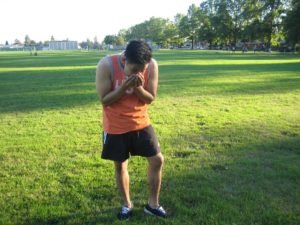In any sport, mouth and dental injuries can occur. A direct blow by an object or a fall can result to injuries. Proper management is required to ensure the best possible survival rate for the affected teeth.
The exterior later of the teeth is called the enamel and composed of mineral salts which makes this protective layer the hardest in the body. There are 2 different parts of a tooth:

- Crown – extends above the gum line and the area where chewing occurs
- Root – attaches with the bone to secure the tooth in place and allows the nerves and blood vessels to pass
How are the injuries categorized?
It is important to note that there are 2 categories of dental injuries.
- Direct injuries – arise once the mouth or head has been hit by an object including the forearm or bat.
- Indirect injuries – occur once an open mouth is abruptly closed which forces the lower teeth of the jaw to be crushed into the upper teeth. This usually affects teeth with a large cavity or a previous root canal.
Remember that there are various forms of dental injuries that might arise. Prompt care and management of these injuries is essential in saving the tooth.
What are the types of dental injuries?
- Avulsed tooth – this occurs once the tooth is fully driven out of its socket. When the tooth is struck out of the mouth, hold it by the crown. Place the tooth right away in a plastic container with whole milk, saline solution or saliva. In case a canister is not on hand and the individual is aware, articulate and can follow instructions, the tooth can be stored under the tongue. If the tooth has been out longer than 2 hours, it has a poor chance of survival.
- Luxated tooth – the tooth has been loosened but not fully knocked out. The tooth can be moved backward, forward and sideways. The treatment includes pushing the tooth back into its original alignment. The individual should be taken to the nearest dental clinic.
- Fractured tooth – there are different classifications of fractures and differentiated by the number of layers affected. The treatment is the same for an avulsed tooth.
Prevention
The prevention of dental injuries usually starts with ensuring the proper protective equipment is in good condition. In some contact sports, mouth guards must be worn.
More Information / Disclaimer
The information posted on this page on dental injuries is for learning purposes only. Learn to recognize and manage these injuries by taking a standard first aid course with Saskatoon First Aid.
